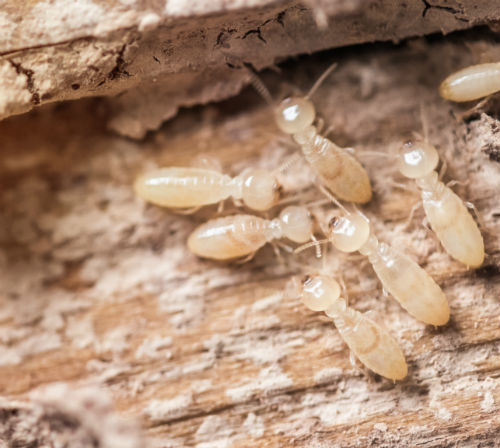If there’s one thing you don’t want to hear after having your residential or commercial property inspected, it’s this:
“You’ve got termites.”
Every spring, Oklahoma braces for the inevitable invasion of termites into the homes and commercial buildings located throughout the state. The warmer months tend to be the worst, as summer and early fall are primetime opportunities for termites to begin nesting within the walls and floors of wood-framed buildings, laying their larvae, and rapidly consuming the very structure itself.

Older buildings that weren’t constructed with treated lumber are most vulnerable to termites, but make no mistake: if you own a wood-framed building in Oklahoma (no matter how old it is), termites are a very real concern.
With the recent decreases we’ve seen in the costs of prefabricated, modular steel buildings, it’s no wonder home and business owners in Oklahoma are shifting their focus to steel as their structural material of choice for new construction.
To understand more about why this is happening, it might help to better understand the termite problem itself.
How Termites Destroy Wood
When termites make their way into the substructure of a wood-framed building, they almost always do so via subterranean access points.
These access points can be tiny cracks or seams in the foundation of the building. Or, they could be anywhere a section of wood comes into contact with soil. After a small handful of termites blaze a trail into the building, the rest of the colony builds ‘mud tubes’ using sediment from the surrounding area.
These mud tubes act as a kind of protective highway that allows the entire colony to move in and set up shop almost completely undetected.

The Feast Is On
Termites have evolved to be able to dine solely on wood pulp. They don’t need any other form of sustenance in order to thrive. For water, the soil surrounding the building has more than enough moisture within it to keep the colony well-hydrated throughout the course of each termite’s life.
After entry into a building has been gained by the termite colony, they almost immediately go to work consuming wood joists and plywood wherever they can find it.
After one section of wood is sufficiently infested, the colony will quickly begin birthing larvae in the recesses left by the consumed wood. This allows the termite population to balloon exponentially, upgrading the threat level from minor to potentially catastrophic.
An Unending Expansion
If left undeterred, a termite colony will grow according to how much available food source (wood) there is.
Because termites are natural burrowers, they’re incredibly mobile within the walls and floors of most buildings. They can scale drywall without a problem, and they can use plumbing or electrical hardware as bridges to access other, wood-laden building sections.
In this fascinating video produced by a pest control company, you can watch a colony of termites completely eradicate the underlying wood components of a model house. It truly is incredible how quickly a single colony of termites can reduce a home or commercial property to mere rubble.
Steel to the Rescue
As devastating as termite infestations can be, there’s one thing that we know with 100% certainty: termites can’t consume steel.
In fact, no invasive pests (including rats, bats, mice, or ants) can cause damage to steel.
This makes steel-built structures totally impervious to termites. And, for property owners in Oklahoma, this translates into real peace of mind.

Wherever there are termites, steel will be seen as a better choice for buildings. Opting for steel construction reduces insurance rates, provides enhanced energy efficiency and results in shorter construction timelines.
When you’re ready to pull the trigger on your Oklahoma steel building—whether for commercial or residential use—contact Capital Steel today. We’ll be happy to put together a customized, no-obligation quote.


